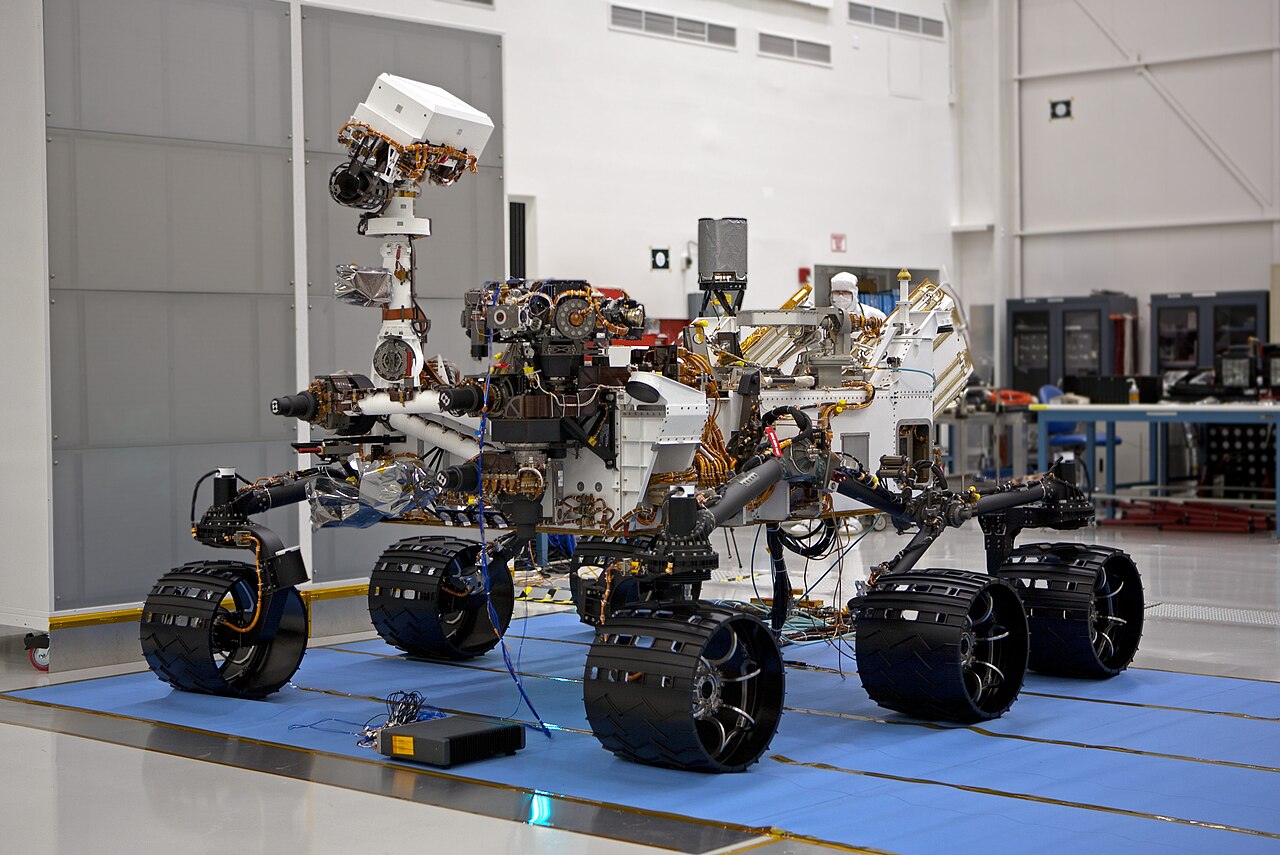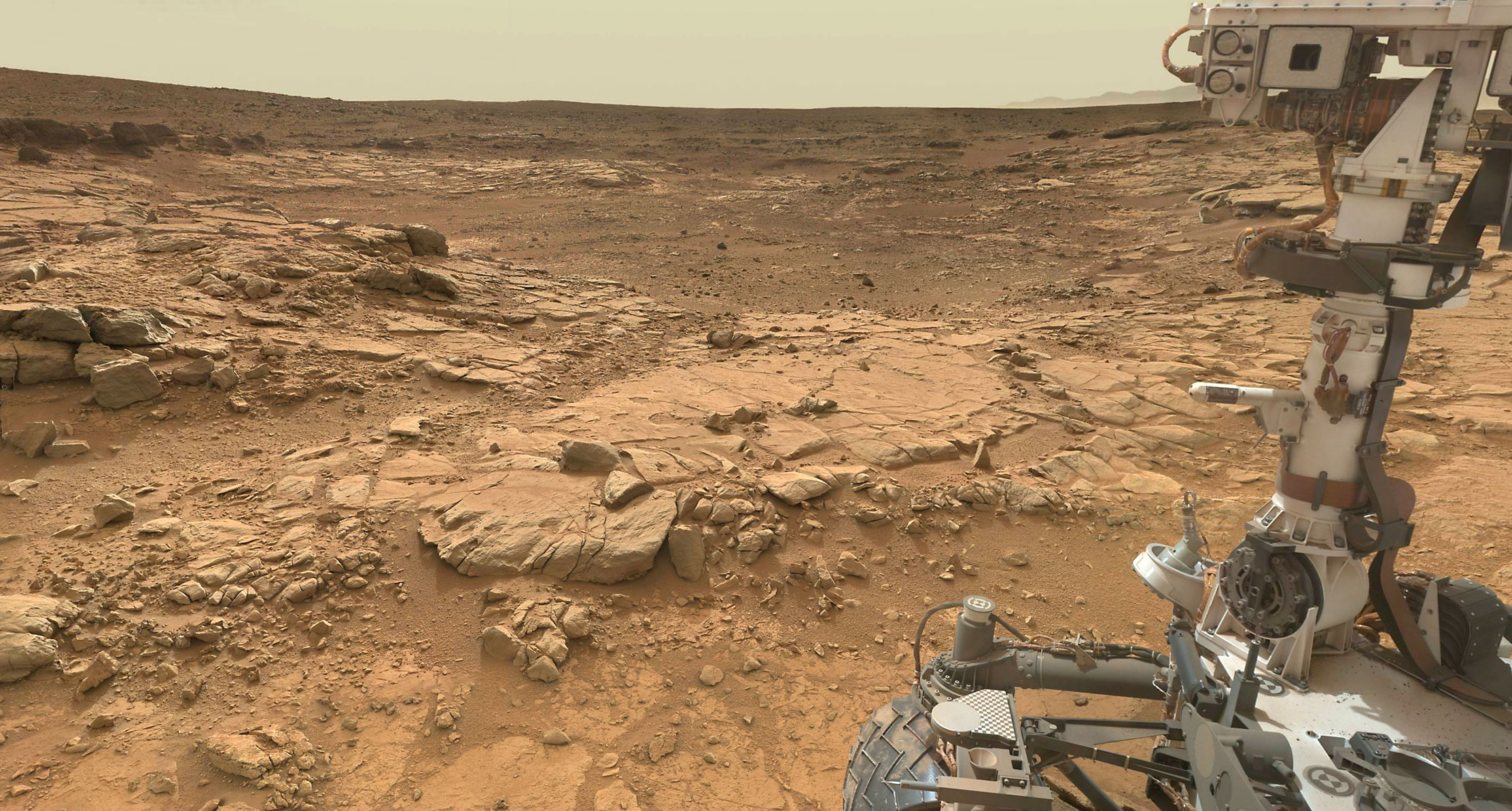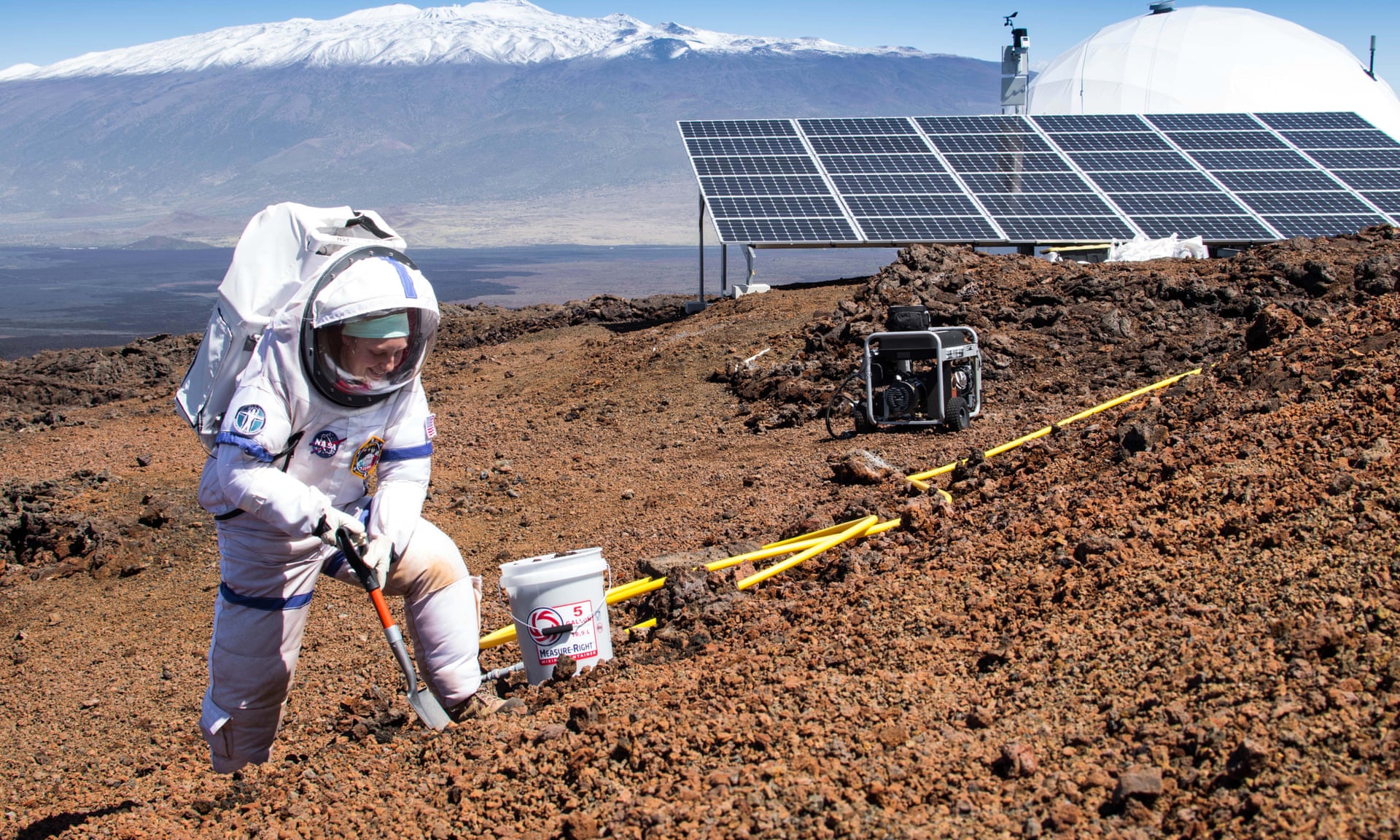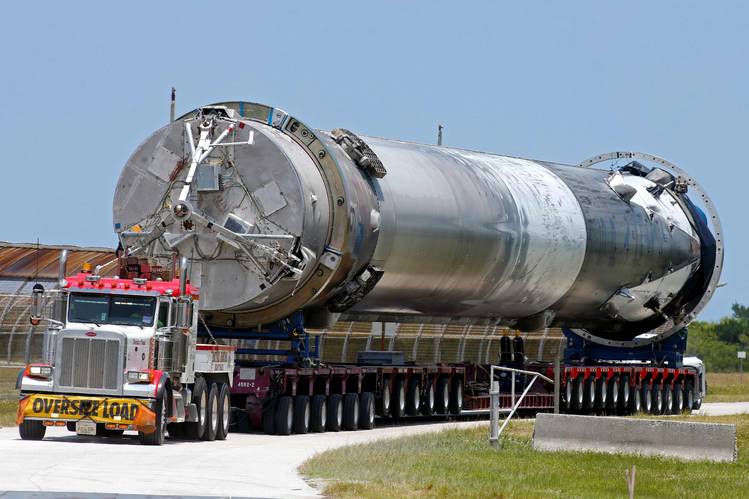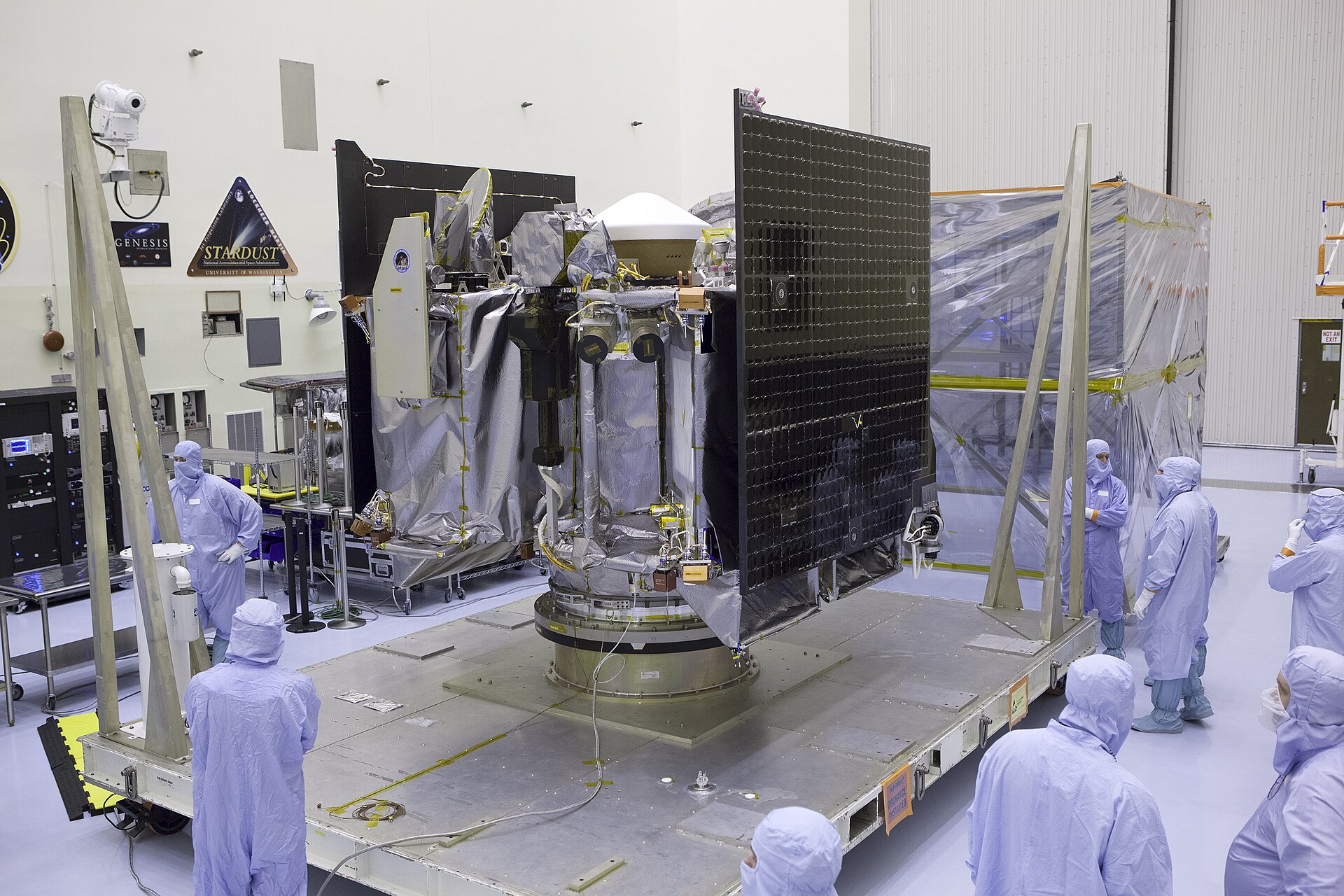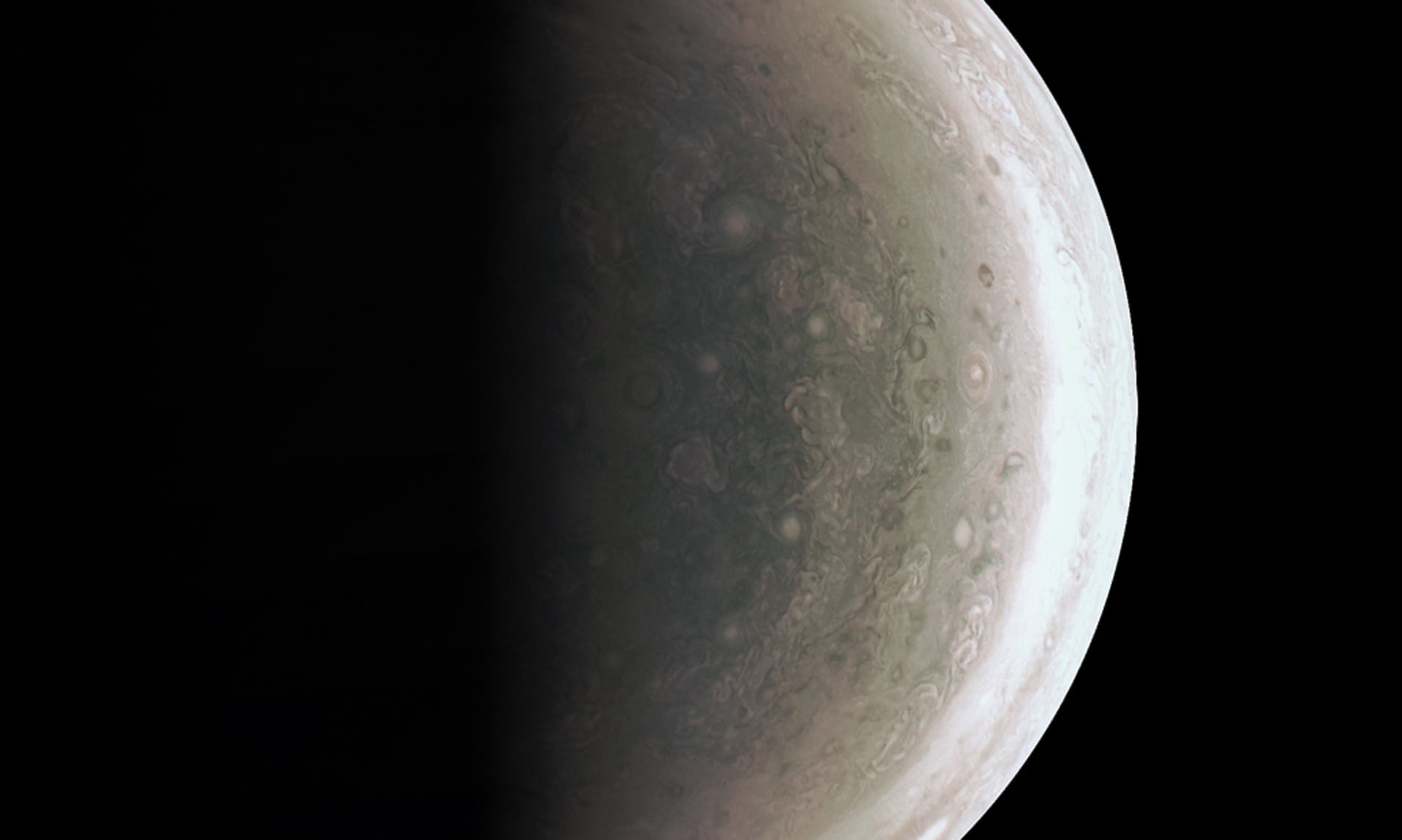http://www.wsj.com/articles/spacex-signs-first-customer-for-launch-of-refurbished-rocket-1472594431
SpaceX Signs First Customer for Launch of Refurbished Rocket
Satellite operator SES agrees to launch one of its large commercial spacecraft
ENLARGE
The recovered first stage of a Falcon 9 rocket is transported to the SpaceX hangar at the Kennedy Space Center in Cape Canaveral, Fla., in May. The company says reusable technology eventually will allow more frequent and significantly less expensive launches of all types of spacecraft. Photo: joe skipper/Reuters
By
Andy Pasztor
Aug. 30, 2016 6:00 p.m. ET
7 COMMENTS
Satellite operator SES SA has agreed to launch one of its large commercial spacecraft on a refurbished Space Exploration Technologies Corp. rocket, marking another advance for reusable boosters.
Scheduled to occur before the end of the year, the mission announced on Tuesday will be the first one to use the lower stage and nine main engines of a Falcon 9 rocket that experienced the rigors of a blastoff and acceleration through the atmosphere on a previous launch. No other commercial space company or military contractor has achieved such a landmark by recovering and reusing the entire lower stage intact, after an initial orbital flight.
Officials of SpaceX, as the Southern California company is called, have been eager to demonstrate such reusable technology, which they describe as a game changer that eventually will allow more frequent and significantly less expensive launches of all types of spacecraft. SpaceX officials have talked about ultimately being able to launch spacecraft at a faster tempo—and for a fraction of their current prices, which typically start at roughly $60 million.
The company so far has returned the main lower portions of six Falcon 9 rockets, by landing them vertically on land or on a
specially outfitted floating ocean platform. The booster destined to carry the SES satellite lifted an unmanned cargo capsule toward the international space station in April.
SpaceX officials also have said the engines of boosters that have returned to Earth proved to be in excellent shape, requiring little refurbishment. The engines are slated to undergo extensive analysis, including repeated test firings on the ground, before being readied for repeat launches. Senior SpaceX officials have predicted that Falcon 9 engines could end up being reused multiple times—potentially up to dozens of missions, and other experts have concurred.
SpaceX founder and Chief Executive Elon Musk hasn’t said how much it is likely to cost to put used boosters back into service, nor has he indicated the extent of discounts available for customers willing to sign up for such launches. Overall, the company has signaled relatively little refurbishment work is expected to be necessary. Detailed structural and other tests are continuing on another returned booster, which experienced the highest re-entry forces.
The
U.S. military remains cool to the general concept because it is reluctant to trust its expensive satellites to recycled boosters until the technology is proven. Claire Leon, the Air Force’s top rocket-acquisition official, told a space-industry conference in May: “It’s going to be a long time before we can actually say we’re going to reuse a rocket.” Some satellite industry consultants and SpaceX critics have argued that the company has a long way to go to
demonstrate the benefits and most of all, the reliability, of reusable rockets.
But commercial satellite operators generally have been more supportive, and in recent months, SES officials have talked up the potential benefits of reusing boosters. The upcoming mission is intended, among other things, to demonstrate that a blue-chip customer is willing to accept a previously used rocket with a relatively short turnaround time to get it ready for another launch.
SpaceX officials also are betting that the Pentagon and other U.S. government customers, which are independently studying broader reusability questions, gradually will follow the lead of SES.
The decision by Luxembourg-based SES, which operates more than 50 large commercial satellites in high-Earth orbit, is particularly significant for several reasons. The move comes despite the fact that the company’s satellite-deployment plans have been disrupted by previous slips in SpaceX launch schedules.
SES, which years ago was the first commercial operator to launch with SpaceX, also has a reputation for technical expertise and long has been viewed by the rest of the industry as exercising caution in adopting new technologies.
As a result, the upcoming launch could help convince other operators, SpaceX customers and insurance providers that reusable rockets are likely to be a major trend.
In its press release, SES called the recycled booster a “flight-proven Falcon 9.” Martin Halliwell, chief technology officer at SES, said: “We believe reusable rockets will open up a new era of spaceflight, and make access to space more efficient in terms of cost and manifest management.”
In Tuesday’s joint release, Gwynne Shotwell, president and chief operating officer of SpaceX, said “relaunching a rocket that has already delivered spacecraft to orbit is an important milestone on the path to complete and rapid reusability.”
One technical issue industry that officials are likely to be watching closely is whether additional tests and work may be needed before relaunching boosters that previously placed satellites into orbits requiring extra propulsion. Those boosters follow faster trajectories, and undergo greater stresses, when returning to land.
SpaceX Dragon Splashes Down with NASA’s Station Science Cargo
Article Updated: 26 Aug , 2016
by
Ken Kremer
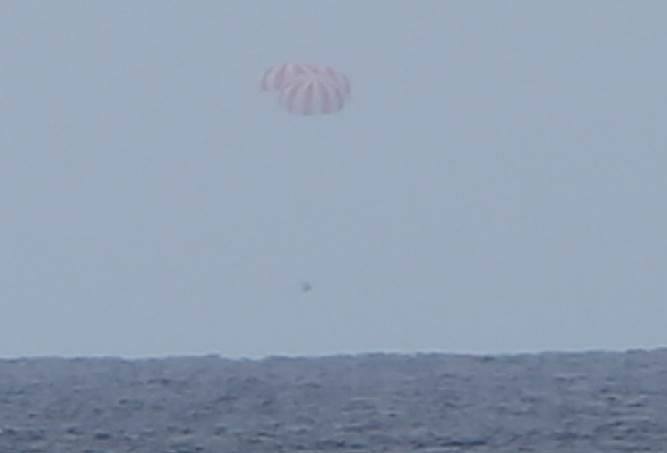
SpaceX Dragon CRS-9 returned to Earth with a splash down in the Pacific Ocean on Friday, Aug. 26, 2016 after more than a month stay at the International Space Station. Credit: SpaceX
A SpaceX commercial
Dragon cargo ship returned to Earth today, Friday, Aug. 26, 2016, by splashing down safely in the Pacific Ocean – thus concluding more than a month long stay at the International Space Station (ISS). The vessel was jam packed with some 1.5 tons of NASA cargo and critical science samples for eagerly waiting researchers.
The parachute assisted splashdown of the Dragon CRS-9 cargo freighter took place at 11:47 a.m. EDT today in the Pacific Ocean – located some 326 miles (520 kilometers) southwest of Baja California.
Dragon departed after spending more than five weeks berthed at the ISS.
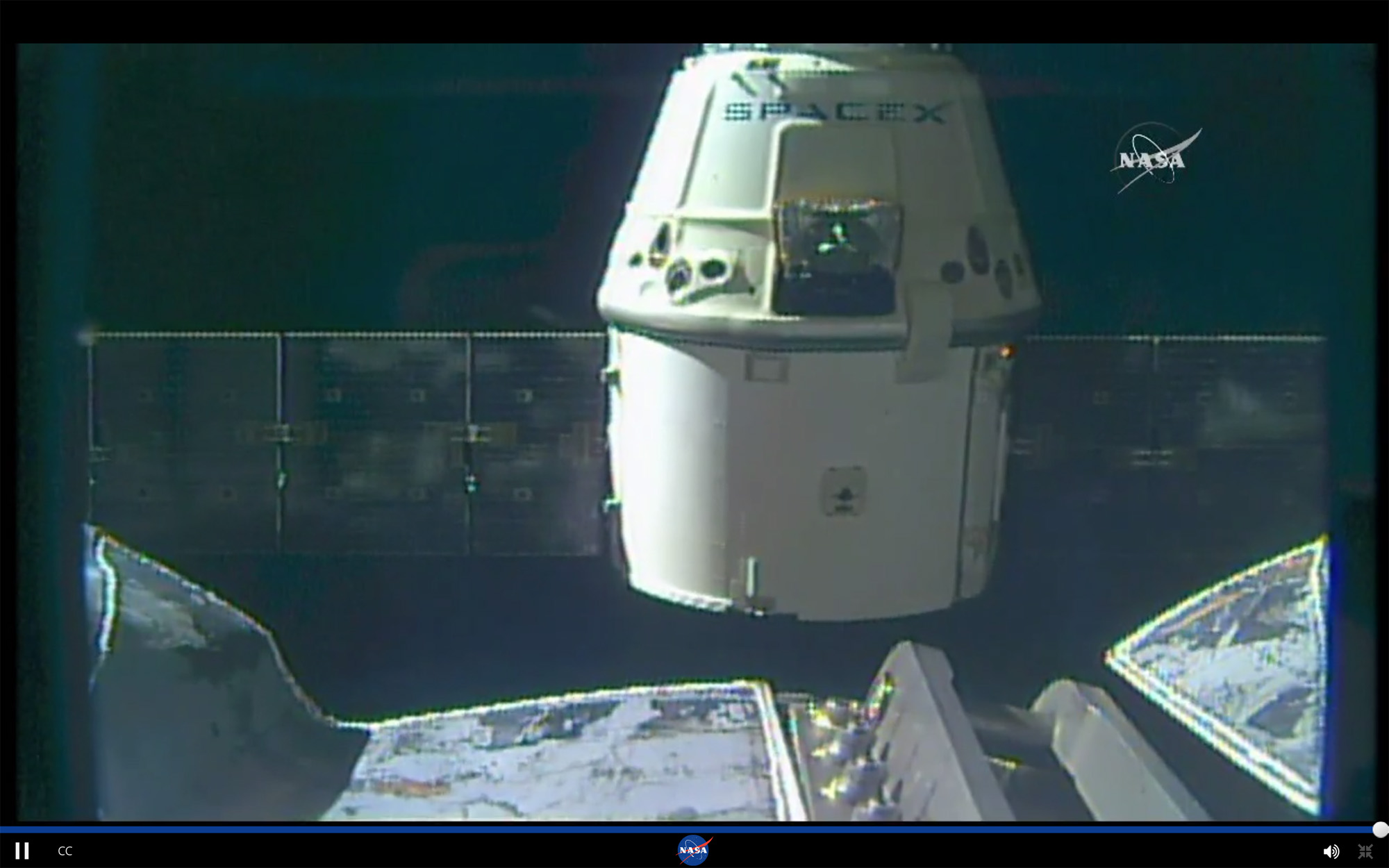
This image, captured from NASA Television’s live coverage, shows SpaceX’s Dragon spacecraft departing the International Space Station at 6:10 am EDT Friday, Aug. 26, 2016, after successfully delivering almost 5,000 pounds of supplies and scientific cargo on its ninth resupply mission to the orbiting laboratory. Credits: NASA Television
It was loaded with more than 3,000 pounds of NASA cargo and critical research samples and technology demonstration samples accumulated by the rotating six person crews of astronauts and cosmonauts living and working aboard the orbiting research laboratory.
This station based research will contribute towards NASA’s strategic plans
to send astronauts on
a ‘Journey to Mars’ by the 2030s.
It arrived at the station on July 20 ferrying over 2.5 tons of priceless research equipment, gear, spare parts and supplies, food, water and clothing for the station’s resident astronauts and cosmonauts as well as the first of two international docking adapters (IDAs) in its unpressurized cargo hold known as the “trunk.”
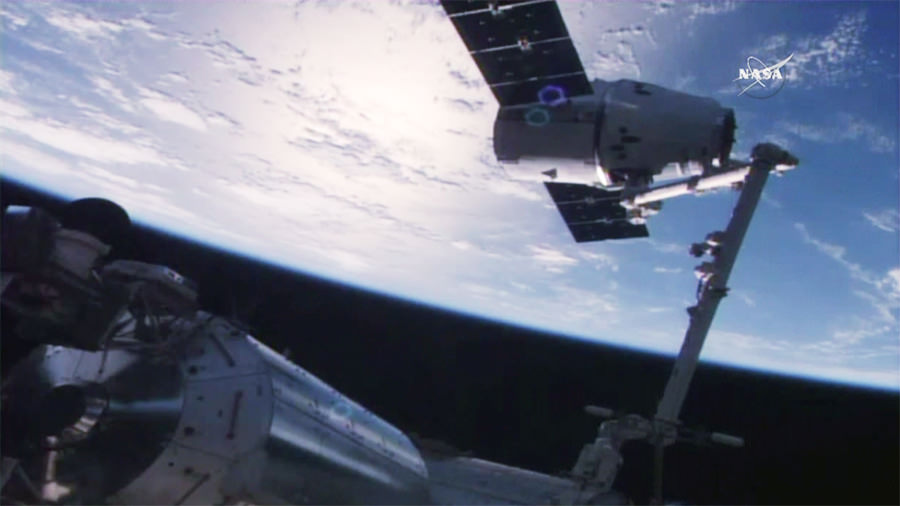
The SpaceX Dragon is captured in the grips of the Canadarm2 robotic arm. Credit: NASA TV
Dragon was launched on July 18 during a mesmerizing post midnight, back-to-back liftoff and
landing of the SpaceX Falcon 9 rocket in its upgraded, full thrust version.
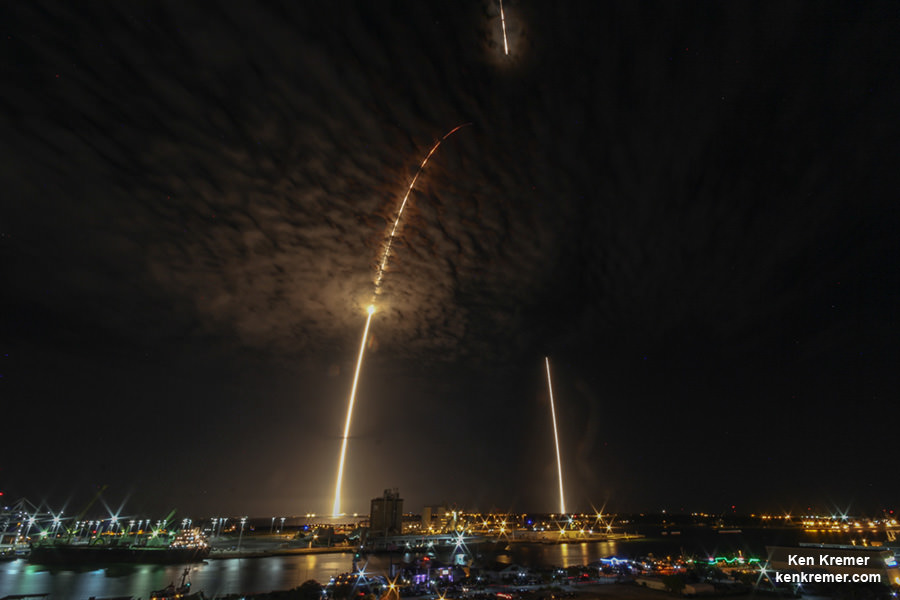
SpaceX Falcon 9 launches and lands over Port Canaveral in this streak shot showing rockets midnight liftoff from Space Launch Complex 40 at Cape Canaveral Air Force Station in Florida at 12:45 a.m. EDT on July 18, 2016 carrying Dragon CRS-9 craft to the International Space Station (ISS) with almost 5,000 pounds of cargo and docking port. View from atop Exploration Tower in Port Canaveral. Credit: Ken Kremer/kenkremer.com
The SpaceX Falcon 9 blasted off at 12:45 a.m. EDT July 18, from Space Launch Complex 40 at Cape Canaveral Air Force Station in Florida and successfully delivered
the Dragon CRS-9 resupply ship to its preliminary orbit about 10 minutes later.
SpaceX also successfully executed a spellbinding ground landing of the Falcon 9 first stage back at Cape Canaveral Air Force Station’s Landing Zone 1, located a few miles south of launch pad 40.
The dramatic ground landing of the 156 foot tall Falcon 9 first stage at LZ -1 took place about 9 minutes after liftoff. It marked only the second time a spent, orbit class booster has touched down intact and upright on land.
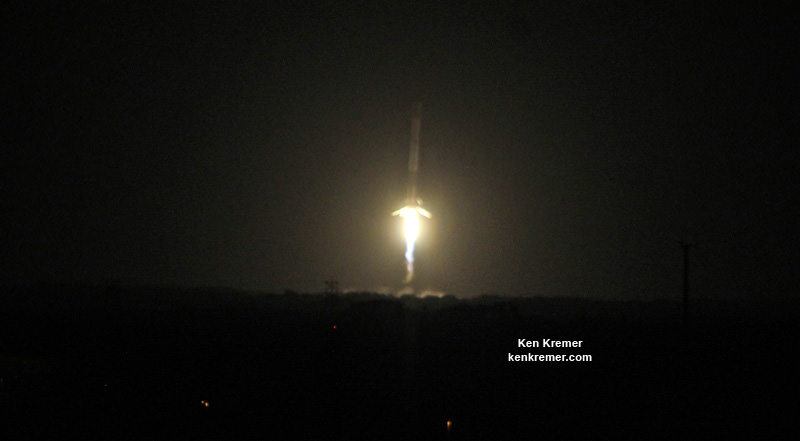
Moments before dramatic touchdown of SpaceX Falcon 9 1st stage at Landing Zone-1 (LX-1) accompanied by sonic booms after launching Dragon CRS-9 supply ship to orbit from Cape Canaveral Air Force Station, Florida at 12:45 a.m., bound for the International Space Station (ISS). Credit: Ken Kremer/kenkremer.com
The stage was set for today’s return to Earth when ground controllers robotically detached Dragon from the Earth-facing port of the Harmony module early this morning using the station’s 57.7-foot (17.6-meter) long Canadian-built robotic arm.
Expedition 48 Flight Engineers Kate Rubins of NASA and Takuya Onishi of the Japan Aerospace Exploration Agency (JAXA) then used Canadarm 2 to release Dragon from the grappling snares at about 6:10 a.m. EDT (1011 GMT) this morning.
“Houston, station, on Space to Ground Two, Dragon depart successfully commanded,” radioed Rubins.
The ISS was soaring some 250 miles over the Timor Sea, north of Australia.
“Congratulations to the entire team on the successful release of the Dragon. And thank you very much for bringing all the science, and all the important payloads, and all the important cargo to the station,” Onishi said. “We feel really sad to see it go because we had a great time and enjoyed working on all the science that the Dragon brought to us.”
Dragon then backed away and moved to a safe distance from the station via a trio of burns using its Draco maneuvering thrusters.
The de-orbit burn was conducted at 10:56 a.m. EDT (1456 GMT) to drop Dragon out of orbit and start the descent back to Earth.
SpaceX contracted recovery crews hauled Dragon aboard the recovery ship and are transporting it to a port near Los Angeles, where some time critical cargo items and research samples will be removed and returned to NASA for immediate processing.
SpaceX plans to move Dragon back to the firms test facility in McGregor, Texas, for further processing and to remove the remaining cargo cache.
Among the wealth of over 3900 pounds (1790 kg) of research investigations loaded on board Dragon was an off the shelf instrument designed to perform the first-ever DNA sequencing in space and the first international docking adapter (IDA) that is absolutely essential for docking of the SpaceX and Boeing built human spaceflight taxis that will ferry our astronauts to the International Space Station (ISS) in some 18 months.
During a spacewalk last week on Aug. 19, the initial docking adapter known as International Docking Adapter-2 (IDA-2) was installed Expedition 48 Commander Jeff Williams and Flight Engineer Kate Rubins of NASA.
Other science experiments on board included OsteoOmics to test if magnetic levitation can accurately simulate microgravity to study different types of bone cells and contribute to treatments for diseases like osteoporosis, a Phase Change Heat Exchanger to test temperature control technology in space, the Heart Cells experiments that will culture heart cells on the station to study how microgravity changes the human heart, new and more efficient three-dimensional solar cells, and new marine vessel tracking hardware known as the Automatic Identification System (AIS) that will aid in locating and identifying commercial ships across the globe.
The ring shaped IDA-2 unit was stowed in the Dragon’s unpressurized truck section. It weighs 1029 lbs (467 kg), measures about 42 inches tall and sports an inside diameter of 63 inches in diameter – so astronauts and cargo can easily float through. The outer diameter measures about 94 inches.
“Outfitted with a host of sensors and systems, the adapter is built so spacecraft systems can automatically perform all the steps of rendezvous and dock with the station without input from the astronauts. Manual backup systems will be in place on the spacecraft to allow the crew to take over steering duties, if needed,” says NASA.
“It’s a passive system which means it doesn’t take any action by the crew to allow docking to happen and I think that’s really the key,” said David Clemen Boeing’s director of Development/Modifications for the space station.
“Spacecraft flying to the station will use the sensors on the IDA to track to and help the spacecraft’s navigation system steer the spacecraft to a safe docking without astronaut involvement.”
CRS-9 counts as the company’s ninth of 26 scheduled flight to deliver supplies, science experiments and technology demonstrations to the International Space Station (ISS).
The CRS-9 mission was launched for the crews of Expeditions 48 and 49 to support dozens of the approximately 250 science and research investigations in progress under NASA’s Commercial Resupply Services (CRS) contract.
Watch for Ken’s continuing SpaceX and CRS mission coverage where he reported onsite direct from the Kennedy Space Center and Cape Canaveral Air Force Station, Florida.
Stay tuned here for
Ken’s continuing Earth and Planetary science and human spaceflight news.

 . This is an inside view of the newly completed fuel tank for the Space Launch System.
. This is an inside view of the newly completed fuel tank for the Space Launch System.
 . This is an inside view of the newly completed fuel tank for the Space Launch System.
. This is an inside view of the newly completed fuel tank for the Space Launch System.


 .
.
